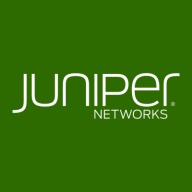

Cisco Nexus and Juniper QFX Series switches compete in the high-performance data center switching market. Cisco Nexus has the upper hand in terms of modularity and automation ease, while Juniper QFX gains an edge with port density and energy efficiency.
Features: Cisco Nexus is renowned for its modular design, flexibility, and performance, essential for data centers. It incorporates VPC, VRF, and VXLAN for reliable and scalable configuration. Additionally, its automation and network visibility make it a key player in data centers. Juniper QFX Series integrates Broadcom chipsets, offering excellent port density and energy efficiency. It supports EVPN-VXLAN, enhancing network scalability and flexibility while maintaining robust performance.
Room for Improvement: Cisco Nexus users point to its complex licensing model and command structure as drawbacks, also highlighting challenges in upgrades and stability. Juniper QFX Series faces criticism for its complicated GUI and integration issues, with users suggesting improvements in software updates and pricing compared to competitors like Fortinet.
Ease of Deployment and Customer Service: Cisco Nexus is praised for its effective technical support and comprehensive installation guides, although support quality can vary by engineer expertise. Juniper QFX Series benefits from robust technical support but finds users facing more deployment complexities due to less extensive documentation compared to Cisco. The presence of knowledgeable local partners is crucial for both products.
Pricing and ROI: Cisco Nexus is known for its high pricing justified by its features and stability, despite the complicated licensing scheme. Customers note good ROI from its reliability. Juniper QFX Series, while costly initially, offers competitive pricing options through strong OEM relationships, providing significant ROI due to scalability, though initial costs can be a barrier. Juniper's pricing offers more flexibility compared to Cisco.
Speeding up our response times and reducing errors and incidents with automation and available APIs.
The normal ROI customers work with is five years unless there is a major change in technology.
For us, we have a time advantage because we know the solution, and the technological refresh is easier.
Sometimes parts are not available in stock, then you have to wait for replacement time.
When building a fabric, you can add multiple leaf switches and multiple spine switches if required.
Initially, the stability of Cisco Nexus, particularly with the ACI, was problematic due to unstable codes, requiring replacements.
Juniper has better performance than any other networking product as far as performance is concerned in the router area.
It might be pretty expensive for other companies.
The solution is on-premises and stable.
When I talk about data centers, which are critical infrastructure and centralized application hubs, the Nexus platforms should be highly stable.
My personal opinion is that if anyone wants to work with a Layer 3 fabric in a data center, they should choose Juniper because working with ACI and APIC is very complex in the Cisco part.
The price of Cisco Nexus is on the higher side due to the premium services Cisco offers.
All solutions are very expensive and not an economy solution.
We are a number one, tier-one partner of Juniper. Therefore, we normally get better discounts than with Cisco because we don't have the level one partnership with Cisco.
It has helped streamline network-related operations with its automation and API capabilities.
For us, we have a time advantage because we know the solution, and the technological refresh is easier.
I would recommend Cisco Nexus for large enterprises and the government sector, as they can afford it.
They are easy to use and flexible to deploy in any kind of environment.
| Product | Market Share (%) |
|---|---|
| Juniper QFX Series Switches | 13.7% |
| Cisco Nexus | 17.8% |
| Other | 68.5% |


| Company Size | Count |
|---|---|
| Small Business | 19 |
| Midsize Enterprise | 17 |
| Large Enterprise | 82 |
| Company Size | Count |
|---|---|
| Small Business | 4 |
| Midsize Enterprise | 1 |
| Large Enterprise | 2 |
QFX Series Switches deliver industry-leading throughput and scalability, an extensive routing stack, the open programmability of the Junos OS, and a broad set of EVPN-VXLAN and IP fabric capabilities. With QFX, you’ll find premier solutions for data center spine-and-leaf, campus distribution, core, and data center gateway and interconnect switching.
Rethink data center operations and fabric management with turnkey Juniper Apstra software in your QFX Series environment. You can automate the entire network lifecycle to simplify design and deployment and provide closed-loop assurance. With Apstra, customers have achieved 90% faster time to deployment, 70% faster time to resolution, and 83% OpEx reduction.
We monitor all Data Center Networking reviews to prevent fraudulent reviews and keep review quality high. We do not post reviews by company employees or direct competitors. We validate each review for authenticity via cross-reference with LinkedIn, and personal follow-up with the reviewer when necessary.